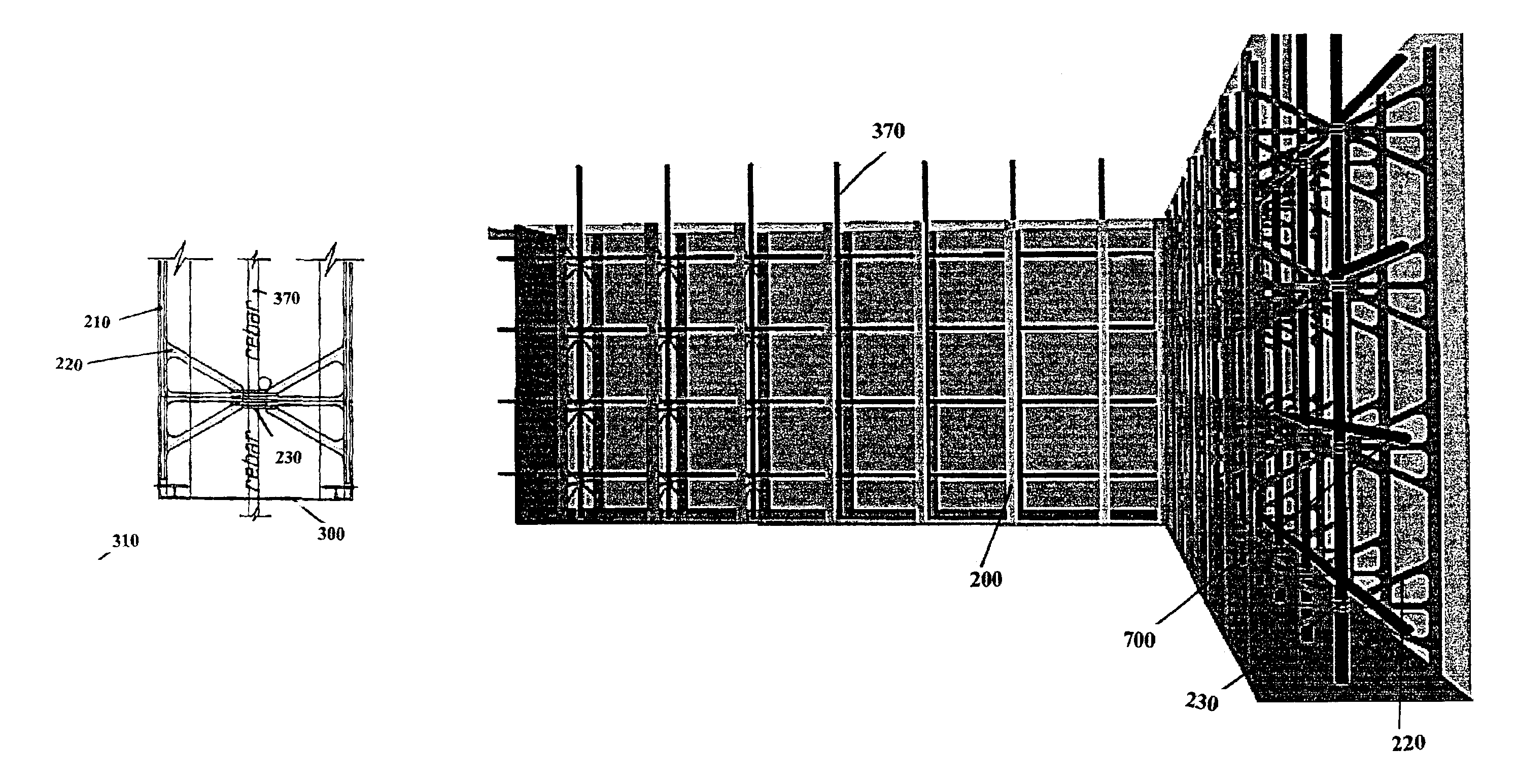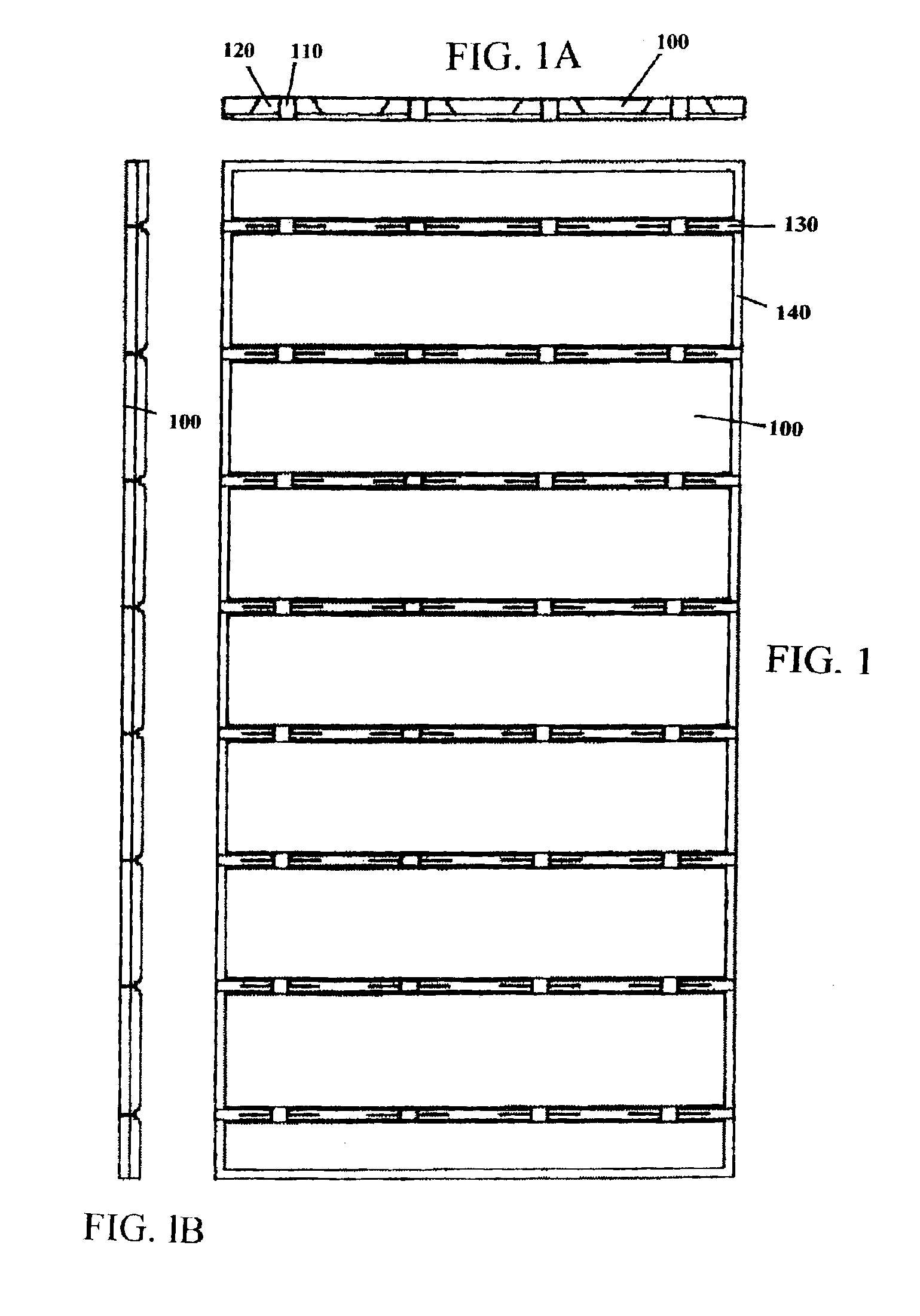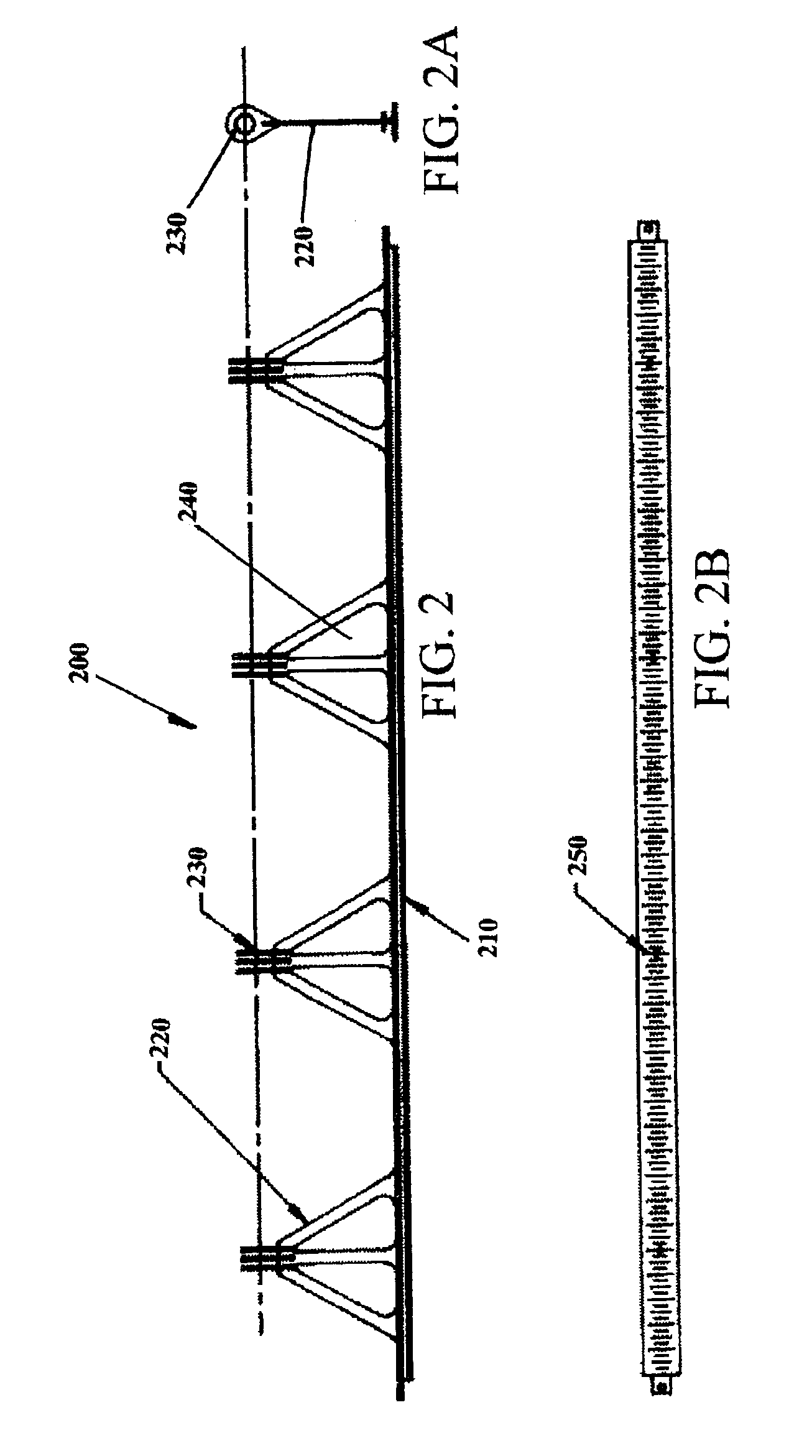Concrete forming system and method
a concrete and forming system technology, applied in the direction of girders, building repairs, auxiliary members of forms/shuttering/falseworks, etc., can solve the problems of affecting the easy and uniform flow of concrete, etc., to achieve convenient and convenient use, simplify construction accuracy, and simplify location and measurement
- Summary
- Abstract
- Description
- Claims
- Application Information
AI Technical Summary
Benefits of technology
Problems solved by technology
Method used
Image
Examples
Embodiment Construction
[0033]The system consists of a number of components, and each of these will be considered in turn.
[0034]The foam forming Panel will first be considered. This typically consists of a 4×8-foot sheet of plastic foam in standard thickness, but may be of any practical dimension, and may be made from any suitable material. It has cutouts on 8 inch or 12 inch standard centers, or other centers as desired, including metric, to accept and locate the Joining and Fastening Strips of the invention. They may be installed in varying thickness, for example, a 3 inch thick panel on the exterior face, and a 2-inch thick panel on the interior face, as desired to provide the best thermal performance. See FIGS. 1, 1A and 1B. FIG. 1B shows a view of one corner of the assembled system as an example. FIGS. 7 and 8 similarly show computer generated perspective views
[0035]The Joining and Fastening Strips will be considered next. These are preferably manufactured from reclaimed plastic with appropriate fille...
PUM
 Login to View More
Login to View More Abstract
Description
Claims
Application Information
 Login to View More
Login to View More - R&D
- Intellectual Property
- Life Sciences
- Materials
- Tech Scout
- Unparalleled Data Quality
- Higher Quality Content
- 60% Fewer Hallucinations
Browse by: Latest US Patents, China's latest patents, Technical Efficacy Thesaurus, Application Domain, Technology Topic, Popular Technical Reports.
© 2025 PatSnap. All rights reserved.Legal|Privacy policy|Modern Slavery Act Transparency Statement|Sitemap|About US| Contact US: help@patsnap.com



